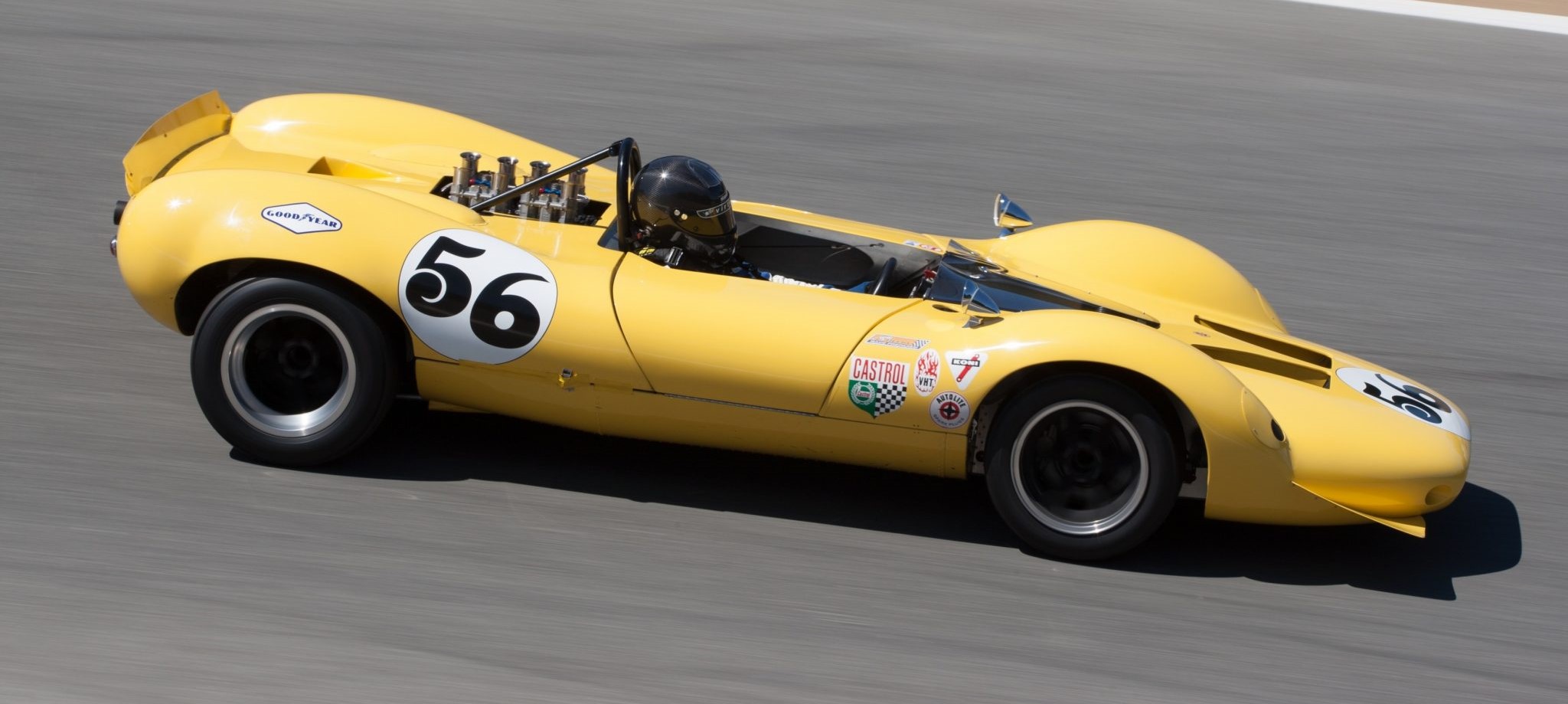
This was Shelby American’s foray into the 1967 Can-Am series. Designed by Lyn Terry, who designed many great vehicles for Lotus Cars, the car features a unique crossover spring suspension.
The 1967 Shelby American King Cobra is a fascinating piece of automotive history, particularly in the realm of sports car racing. This car was developed by Shelby American with the intention of competing in the Can-Am (Canadian-American Challenge Cup) series, which was known for its high-performance, unrestricted race cars.
Key Highlights:
- Design and Development: The King Cobra was designed by the legendary Carroll Shelby and his team. It was built as a successor to the Cobra sports cars but aimed to compete in the more powerful and competitive Can-Am series.
- Chassis and Body: The car featured a lightweight and aerodynamic design, which was crucial for racing success. It had a unique, low-slung body with a distinctive front end and aggressive styling.
- Engine and Performance: The King Cobra was initially fitted with a 427 cubic inch (7.0-liter) V8 engine, which was a potent powerplant for the era. This engine was known for its performance and was well-suited for the high speeds and demanding nature of Can-Am racing.
- Racing History: Despite its promising design and powerful engine, the King Cobra faced stiff competition from other manufacturers and did not achieve the same level of success as some of its rivals in the Can-Am series. However, it remains a notable example of Shelby’s engineering prowess and racing ambition.
- Legacy: The King Cobra is now considered a valuable and rare collector’s item. Its significance in the history of racing and its connection to Carroll Shelby’s legacy make it a coveted piece among automotive enthusiasts.
Engine:
- Type: 427 cubic inch (7.0-liter) V8
- Power Output: Approximately 620 horsepower
- Configuration: Front-mounted engine
- Fuel System: Typically equipped with a four-barrel carburetor or fuel injection in some variants
Transmission:
- Type: 4-speed manual
- Configuration: Rear-mounted transaxle for better weight distribution
Chassis and Body:
- Construction: Tubular space frame
- Body Material: Lightweight fiberglass
- Design: Low, wide, and aerodynamic with a distinctive nose and tail
Dimensions:
- Wheelbase: Approximately 92 inches (234 cm)
- Length: Around 175 inches (445 cm)
- Width: About 75 inches (190 cm)
- Height: Approximately 39 inches (99 cm)
- Weight: Around 1,500 lbs (680 kg)
Suspension:
- Front: Independent suspension with double wishbones
- Rear: Live axle with coil springs
Brakes:
- Type: Disc brakes all around
Performance:
- Top Speed: Estimated to be around 200 mph (320 km/h), though actual speeds varied depending on setup and conditions.
- Acceleration: 0-60 mph (0-97 km/h) in under 3.5 seconds
Other Features:
- Aerodynamics: Advanced for its time, featuring a low drag coefficient and aggressive downforce features.
- Tires: Racing slicks designed for maximum grip.

You must be logged in to post a comment.